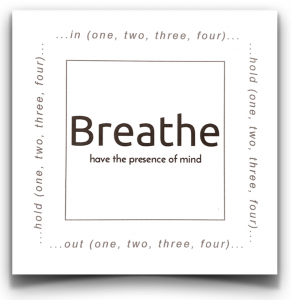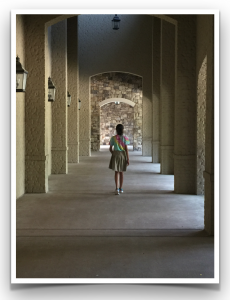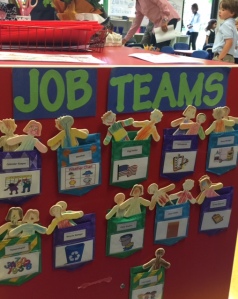 What is one of the most important life skills impacting health, relationships, and achievement? Self-regulation.
What is one of the most important life skills impacting health, relationships, and achievement? Self-regulation.
Self-regulation can be broadly defined as the ability to manage and control oneself. This relates to one’s emotions (moods and feelings) as well as one’s behaviors (actions). It is recognizing when you are experiencing stress or over excitement. It is how you use tools and strategies to adjust your moods and work through feelings. It is exhibiting appropriate behaviors in spite of what you are feeling.
As educators and/or parents, we teach self-regulation to children constantly. It’s what we are doing when we help them complete a task they don’t feel like doing but should (eg. sharing and cleaning up after themselves). It’s also what we are doing when we help children work through emotions such as sadness or frustration.
It’s important to note that research is increasingly showing the connection between a child’s self-regulation and that of their adult caretakers. Meaning, we influence a child’s self-regulation not just through our teaching, but also through our modeling and practice of self-regulation skills. At any moment, how we manage our own emotions and behaviors – that show up in the words and tone we use or through the thoughtful or impulsive decisions we make – can determine how a child responds. It is a cyclical process. So, how can we as the more social-emotionally skilled person in an interaction with a child manage our own emotions and behaviors and support him/her to a favorable outcome? Breathe.
One of my favorite TEDTalks is Breathing happiness by Emma Seppälä. In this Talk, Seppälä uses examples of work with military in combat and veterans experiencing PTSD to explain how we can manage our breathing to change our mood and gain “the presence of mind” to negotiate the most difficult and stressful situations. Seppälä describes the strategy of “square breathing” (inhaling for a count of four, holding for a count of four, exhaling for a count of four, holding for a count of four and repeating) as a way to lower the heart rate and gain composure. I have found this strategy to be a helpful tool to use with students and for myself. Note: I alter the language when working with young students to “Suck in like you are drinking a juice box; hold it. Now, blow out like birthday candles.”
Self-regulation is a skill we continue to develop throughout adulthood. Square breathing is hopefully a helpful tool you can add to your belt. I wish you a wonderful school year and happy breathing!
Learner, Thinker, Writer: Rhonda Mitchell serves Trinity School as the Early Elementary Division Head

 Grand Day is one of my favorite events at school for so many reasons, not the least of which is seeing the pride of students, teachers, and grands over the accomplishments of learning and friendships. Beyond that, listening to grandparents talk to each other about what they perceive as happening with and for their grandchildren allows me to see what we do with fresh eyes. I don’t know if it is the wisdom grandparents have earned over time or an appreciation for fundamentals now overlooked, but grandparents seem to recognize the implicit learning objectives built into our teaching as readily as they see the obvious, stated objectives. One grandparent stopped me to ask if we have always given the students “jobs” in the classroom. I thought, “Yes! We vertically align learning objectives and facilitate interdisciplinary experiences to deepen student understanding while empowering them with skills and strategies all of the time. Thank you for noticing.” I did not say that. After I explained the jobs chart, he was so impressed with the idea of developing academic skills while promoting a sense of personal responsibility and community. But, I wonder if we think about the depth of learning that will occur each year when those charts are set up. Or, have we done it so long that we just know “jobs” are what we do?
Grand Day is one of my favorite events at school for so many reasons, not the least of which is seeing the pride of students, teachers, and grands over the accomplishments of learning and friendships. Beyond that, listening to grandparents talk to each other about what they perceive as happening with and for their grandchildren allows me to see what we do with fresh eyes. I don’t know if it is the wisdom grandparents have earned over time or an appreciation for fundamentals now overlooked, but grandparents seem to recognize the implicit learning objectives built into our teaching as readily as they see the obvious, stated objectives. One grandparent stopped me to ask if we have always given the students “jobs” in the classroom. I thought, “Yes! We vertically align learning objectives and facilitate interdisciplinary experiences to deepen student understanding while empowering them with skills and strategies all of the time. Thank you for noticing.” I did not say that. After I explained the jobs chart, he was so impressed with the idea of developing academic skills while promoting a sense of personal responsibility and community. But, I wonder if we think about the depth of learning that will occur each year when those charts are set up. Or, have we done it so long that we just know “jobs” are what we do?




